Surrealist Meret Oppenheim in 5 Artworks
Exploring five works by female Surrealist Meret Oppenheim
Candy Bedworth 26 September 2024
The title of this exhibition: Lee Miller and Surrealism in Britain, allows us to explore the way in which the artists involved in the movement came together in Britain during the 1930s. Lee Miller associated, worked, loved and even married a number of the surrealist movement’s leading lights, but it is her work and influence that dominates this exhibition.
Although American (born in Poughkeepsie, New York in 1907) and with contributions from the surrealists of France, Germany and Britain, this exhibition focuses on the way in which these artists came together in England in the 1930s just as the world was about to explode into warfare and tear apart the lives of these artists, poets and writers.
Lee Miller began life as a 19-year-old model, found by accident when the publisher Conde Nast allegedly collided with her in his car. Miller quickly became the face of Vogue, but just as quickly knew that she wished to be behind the camera.
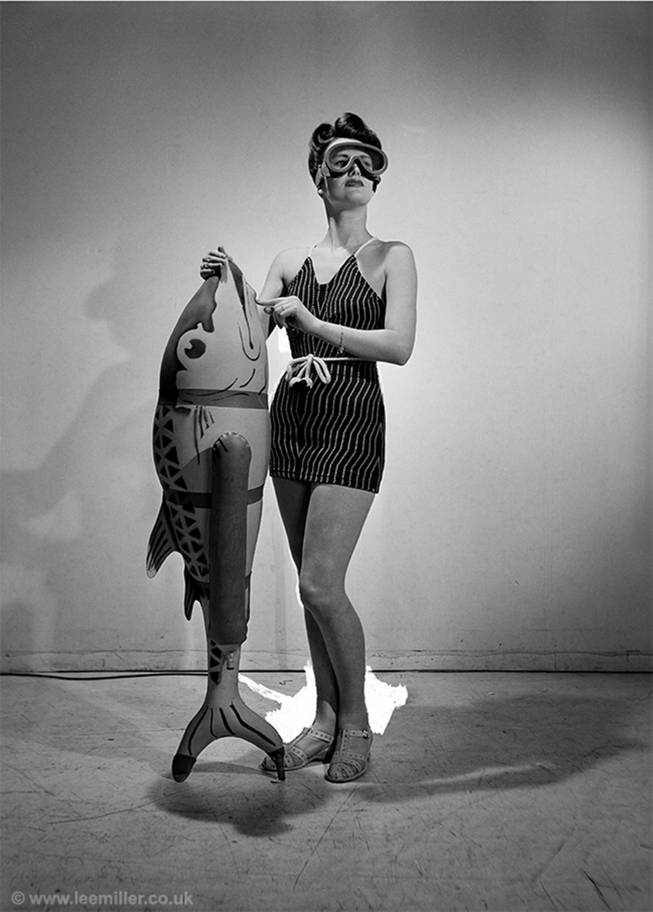
In 1929, Miller took the decision to move to Paris to become an apprentice to a surrealist photographer, Man Ray. For the next four year, Miller collaborated with, inspired and loved the extraordinary artist. As was typical in the trope of surrealism, women were frequently reduced to body parts, and Man Ray used his muse in this way to touching effect:
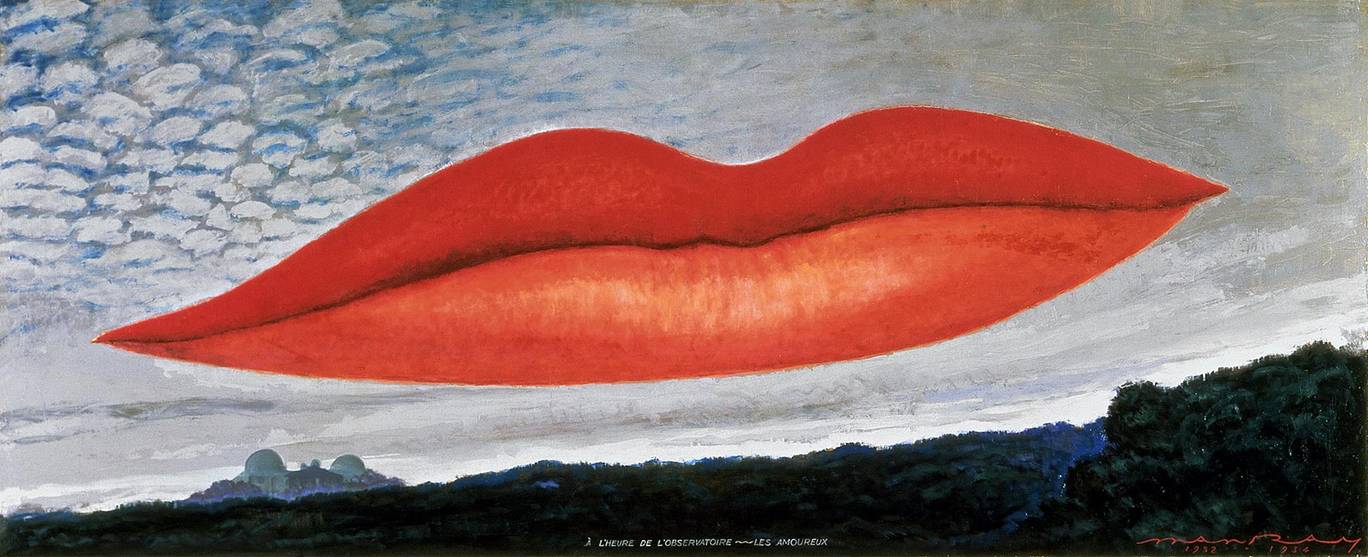
The first room has her early surrealist photographs which include the shocking Untitled, (Severed Breast from Radical Surgery in a Place Setting 1 and 2) in which Miller placed the surgical remains from a mastectomy onto serving plates; thereby making the connection between the bizarre and the everyday that was the trademark of the surrealists but also challenging the masculine reduction of women into body parts. By way of contrast, there is also a set of stunningly beautiful cropped female nudes that have a phallic quality about them. Miller is clearly a woman not to be put off by the traditionally masculine world of the surrealists.
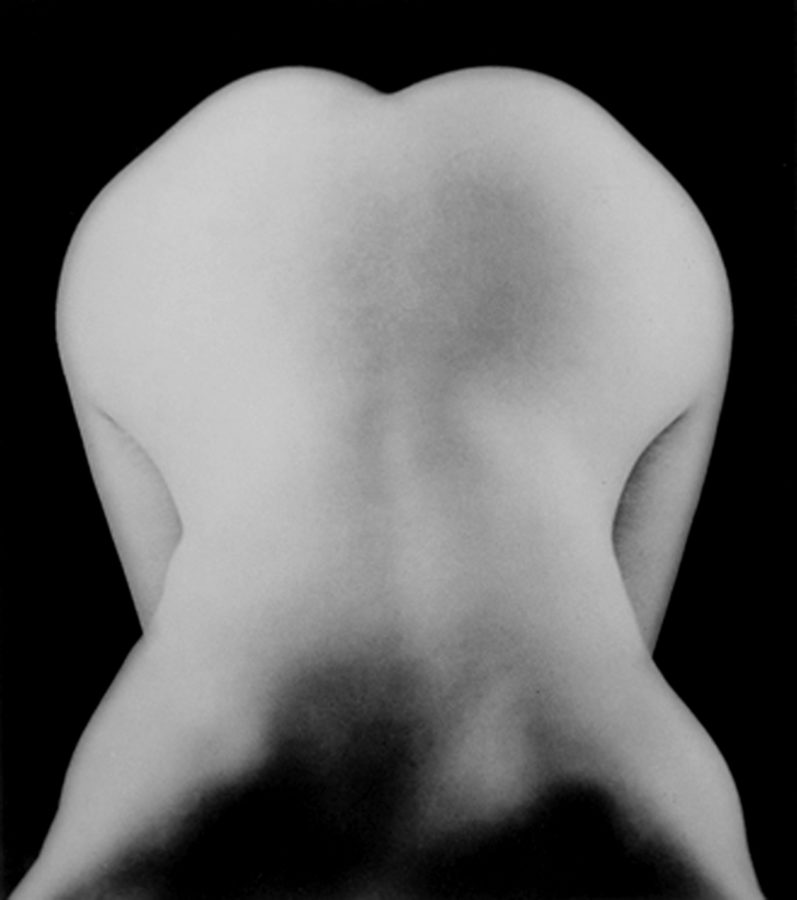
Although the romance with Man Ray was not to last, the friendship did, and the connections that Miller made from her time in Paris, were to remain in place for all of her life. Close relationships with the poet, Paul Eluard, his wife Nusch, German surrealist Max Ernst, amongst others, were to have another influence on the next stage of her life.
After setting up her own studio in New York which she abandoned when her marriage to Egyptian industrialist, Aziz Eloui Bey took Miller to live in Egypt, it was clear that Miller saw herself as a photographer first and foremost.
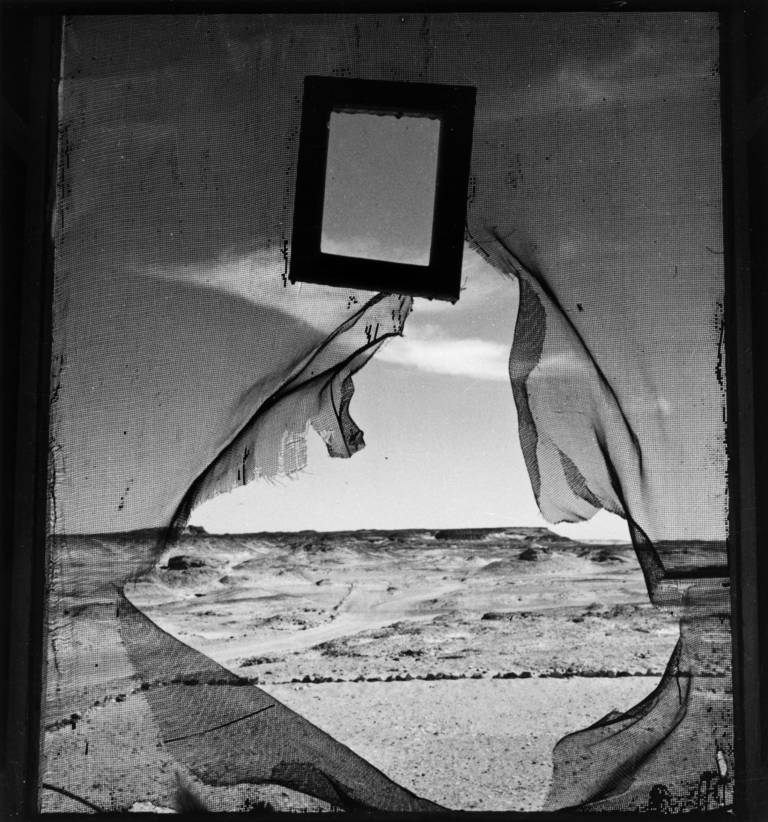
A return to Europe in 1937 was the catalyst she needed. Meeting the British artist and collector, Roland Penrose was to change everything and the second room has a cornucopia of incredible artworks by Miller and her surrealist friends.
No other art movement can boast of such an eclectic range of people all working, living and loving together as this group. One summer in Cornwall brought Penrose and Miller to the fore of the group and they were visited by Max Ernst and his new love, Leonora Carrington, whose own works would soon surpass those of her influential lover; Paul and Nusch Eluard, Man Ray and his girlfriend, Ady Fidelin.
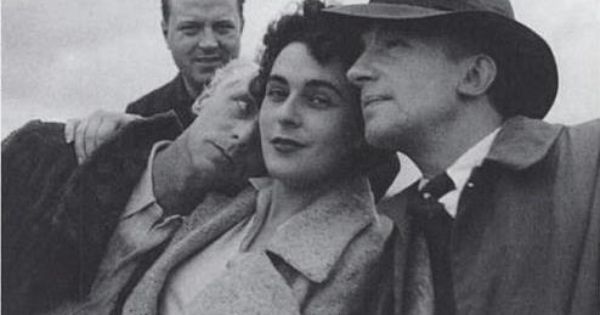
Standout works in this section include:
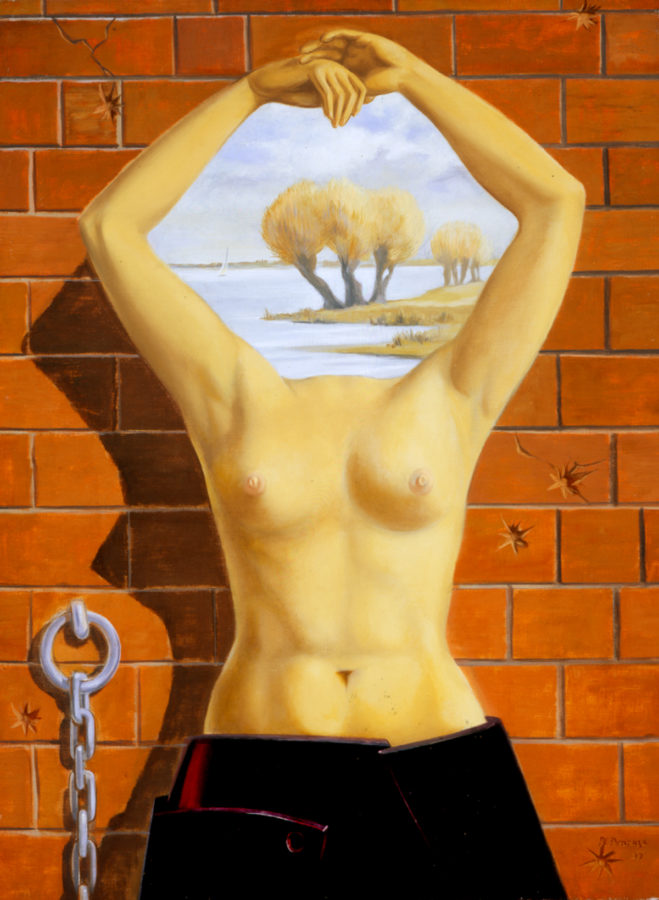
Roland based this on a nude photograph of Miller and the replacement scene and the background are reminiscent of both De Chirico and Matisse, artists well-known to the pair.

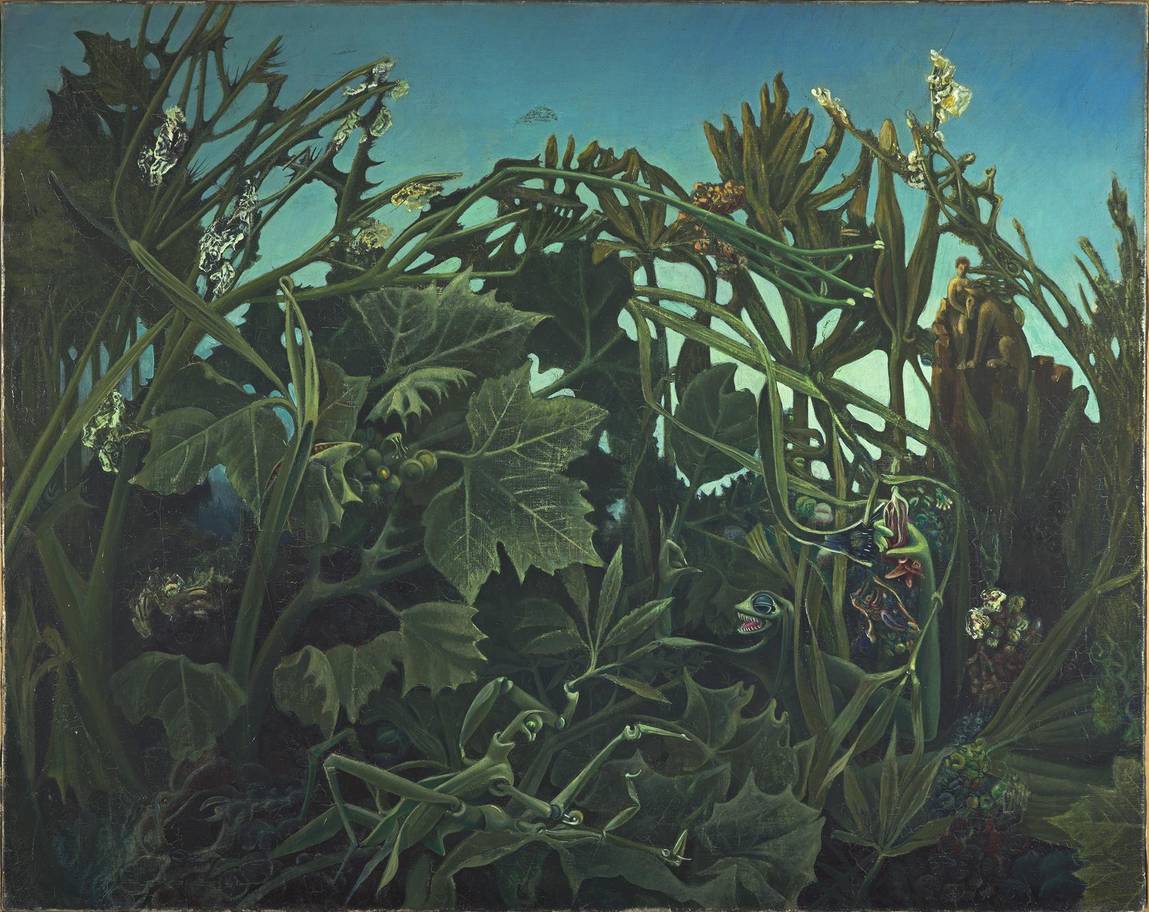
On one wall you will find these two paintings by Leonora Carrington and Max Ernst. Don’t be put off by the positive nature of the titles of these two paintings; there is more to these than meet the eye. Look closely at the human/animal hybrids of Carrington’s pastoral idyll and the mantis-like creatures that crawl through the foliage in Ernst’s ironically titled ‘Joy of Life’.
In a rather quiet moment, there is also this landscape by Paul Nash, and the detail of the tree stump simply takes your breath away!
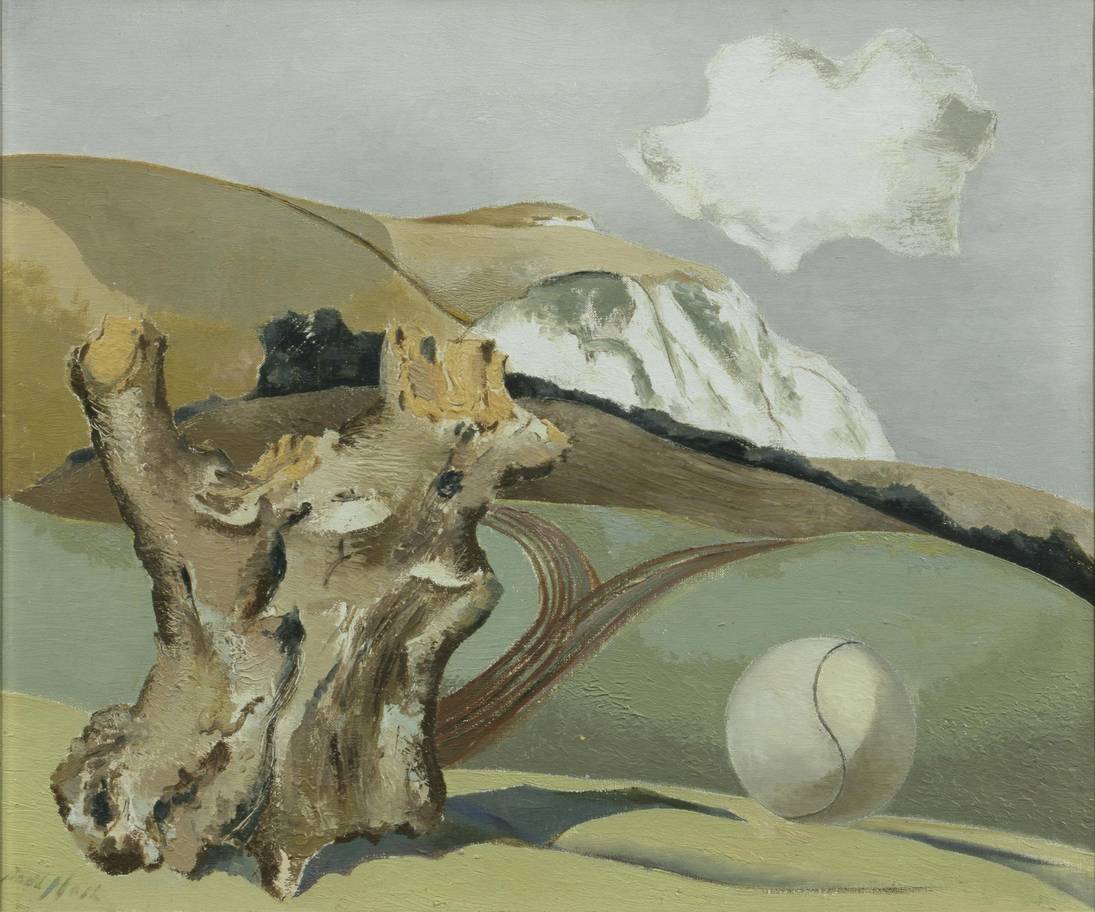
DailyArt Magazine needs your support. Every contribution, however big or small, is very valuable for our future. Thanks to it, we will be able to sustain and grow the Magazine. Thank you for your help!